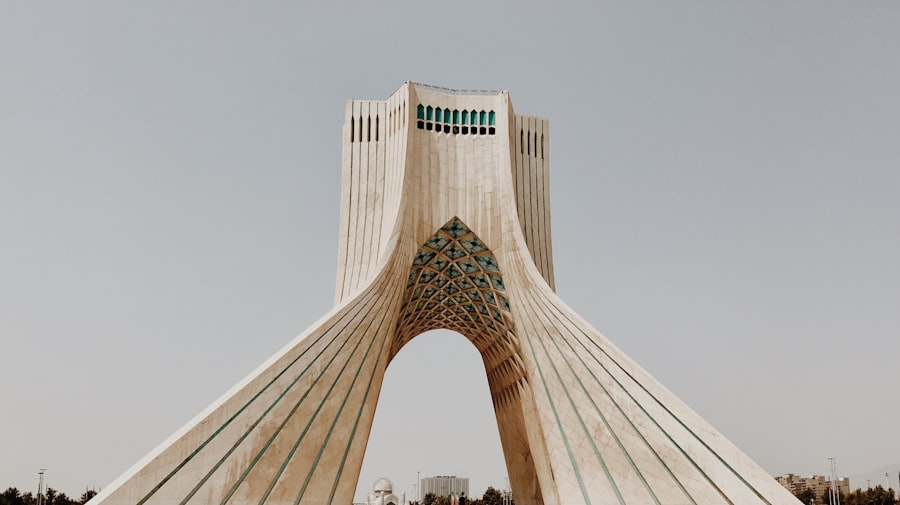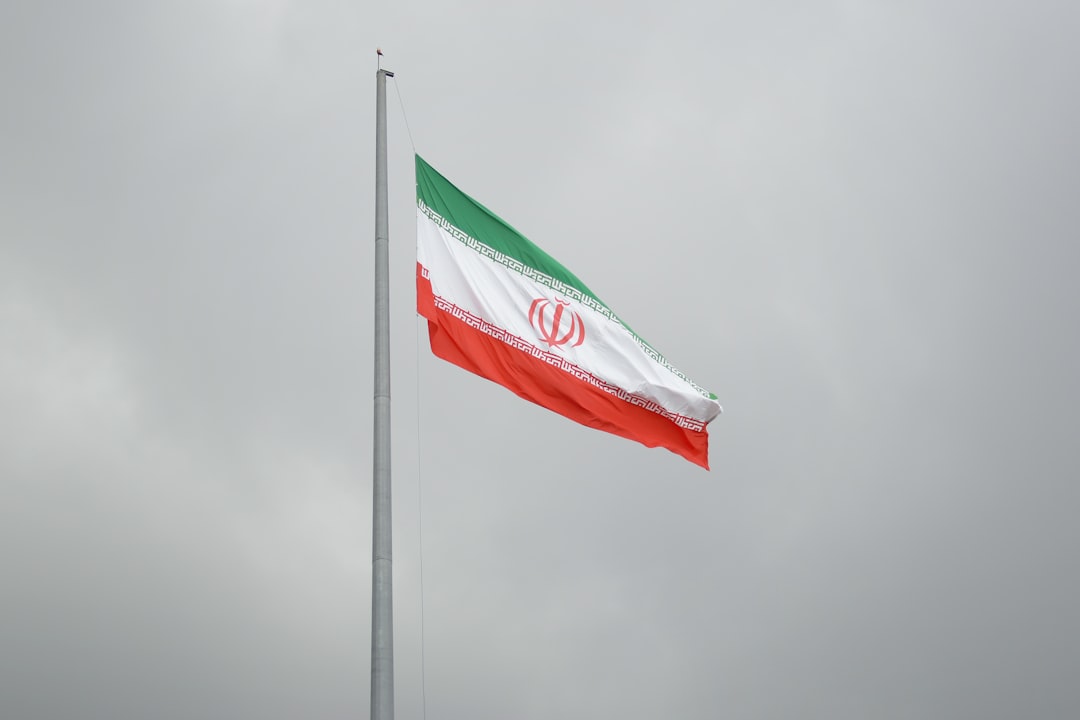The Iran-Iraq War, which erupted in September 1980 and lasted until August 1988, stands as one of the most devastating conflicts of the late 20th century. This protracted war not only reshaped the geopolitical landscape of the Middle East but also left a profound impact on the nations involved, particularly Iran and Iraq. The conflict was characterized by its brutal trench warfare, extensive use of chemical weapons, and a staggering loss of life, with estimates suggesting that over a million people perished as a result of the hostilities.
As the war unfolded, it drew in various international actors and elicited a range of responses from global powers. The conflict was marked by a complex interplay of nationalism, ideology, and regional power dynamics.
The ramifications of the war extended far beyond the borders of Iran and Iraq, influencing global oil markets, shifting alliances, and setting the stage for future conflicts in the region. Understanding the Iran-Iraq War requires a comprehensive examination of its background, causes, and consequences, as well as the broader historical context that shaped this tragic chapter in Middle Eastern history.
Key Takeaways
- The Iran-Iraq War was a devastating conflict that lasted from 1980 to 1988, resulting in significant loss of life and economic damage.
- Saddam Hussein’s rise to power in Iraq was marked by a brutal and authoritarian regime that sought to assert dominance in the region.
- Iran and Iraq had a history of strained relations, including border disputes and ideological differences, leading up to the outbreak of the conflict.
- The causes of the Iran-Iraq War included territorial disputes, religious differences, and a power struggle for regional dominance.
- The outbreak of war in 1980 was marked by a surprise attack from Iraq, leading to years of intense fighting and significant loss of life.
Background on Saddam Hussein’s Rise to Power
Saddam Hussein’s ascent to power was a product of both personal ambition and the tumultuous political landscape of Iraq in the mid-20th century. Born in 1937 in a small village near Tikrit, Saddam’s early life was marked by poverty and hardship. He became involved in politics at a young age, joining the Ba’ath Party in 1957, which espoused Arab nationalism and socialism.
His political career gained momentum after the Ba’ath Party seized power in a coup in 1968, leading to his appointment as vice president under Ahmed Hassan al-Bakr. Over the next decade, Saddam consolidated his power through a combination of political maneuvering and ruthless suppression of dissent. By 1979, he had effectively sidelined al-Bakr and assumed the presidency.
His leadership style was characterized by authoritarianism and a cult of personality that portrayed him as the savior of Iraq. Saddam’s ambitions extended beyond domestic governance; he sought to position Iraq as a dominant power in the Arab world. This desire for regional influence would ultimately play a significant role in his decision to invade Iran.
Iran-Iraq Relations Before the Conflict

Before the outbreak of war, relations between Iran and Iraq were marked by a complex mix of historical animosities and political rivalries. The two nations shared a long border and had experienced periods of both cooperation and conflict throughout their histories. The 1979 Iranian Revolution, which resulted in the establishment of an Islamic Republic under Ayatollah Khomeini, significantly altered the dynamics between the two countries.
The revolution inspired Shiite populations across the region, including in Iraq, where Saddam feared that Khomeini’s ideology could incite dissent among Iraq’s Shiite majority. In addition to ideological differences, territorial disputes also fueled tensions between Iran and Iraq. The Shatt al-Arab waterway, which forms part of the border between the two countries, was a particularly contentious issue.
Control over this vital waterway was crucial for both nations’ access to oil exports and trade routes. As Saddam sought to assert Iraq’s dominance in the region, he viewed Iran’s revolutionary fervor as a direct threat to his regime’s stability. These underlying tensions set the stage for the eventual outbreak of war.
Causes of the Conflict
| Cause | Description |
|---|---|
| Historical grievances | Long-standing disputes over land, resources, or power. |
| Ethnic or religious tensions | Conflict between different ethnic or religious groups. |
| Political instability | Weak governance or power struggles within the government. |
| Economic inequality | Disparities in wealth and opportunities leading to social unrest. |
| External interference | Involvement of other countries or external actors in the conflict. |
The causes of the Iran-Iraq War were multifaceted and deeply rooted in both historical grievances and contemporary political dynamics. One primary factor was Saddam Hussein’s desire to assert Iraqi dominance in the region following the upheaval caused by the Iranian Revolution. He believed that by invading Iran, he could capitalize on its internal turmoil and establish Iraq as a leading power in the Arab world.
This ambition was fueled by a perception that Iran was weakened by its revolutionary changes and that its military capabilities were diminished. Another significant cause was the longstanding territorial disputes between the two nations, particularly over the Shatt al-Arab waterway. Control over this strategic waterway was essential for both countries’ economies, as it provided access to international shipping routes for their oil exports.
Additionally, Saddam sought to exploit Iran’s vulnerability to bolster his own legitimacy at home by rallying nationalistic sentiments among Iraqis. The combination of these factors created a volatile environment ripe for conflict, ultimately leading to Saddam’s decision to launch an invasion.
The Outbreak of War
The Iran-Iraq War officially began on September 22, 1980, when Iraqi forces launched a surprise attack on Iranian territory. The initial assault targeted key military installations and cities along the border, with Saddam hoping for a swift victory that would secure his regime’s position and expand Iraq’s territorial claims. However, what began as an ambitious military campaign quickly devolved into a protracted and bloody conflict that would last for nearly eight years.
In response to the invasion, Iran mobilized its military forces and called upon its citizens to defend their homeland against what they perceived as an unprovoked aggression. The Iranian leadership framed the conflict as a struggle against imperialism and oppression, rallying nationalistic fervor among its population. As both sides dug in for a long war of attrition, it became clear that neither would achieve a quick victory.
The initial optimism surrounding Iraq’s military capabilities soon gave way to a grueling stalemate characterized by trench warfare reminiscent of World War

Key Battles and Tactics
Throughout the course of the Iran-Iraq War, several key battles defined the conflict and showcased the evolving tactics employed by both sides. One notable engagement was the Battle of Khorramshahr in 1980, where Iraqi forces initially captured the strategic city but faced fierce resistance from Iranian defenders. This battle exemplified Iran’s determination to repel Iraqi advances despite being caught off guard at the war’s outset.
As the war progressed, both nations adapted their military strategies in response to changing circumstances on the battlefield. Iraq relied heavily on its air force and artillery to conduct large-scale offensives while employing chemical weapons as a means of psychological warfare against Iranian troops. Conversely, Iran adopted unconventional tactics such as human wave attacks, where large numbers of infantry would charge enemy positions in an effort to overwhelm them through sheer force of numbers.
These tactics resulted in staggering casualties on both sides but also demonstrated each nation’s resolve to achieve victory at any cost.
Impact on Civilians
The Iran-Iraq War had a devastating impact on civilian populations in both countries, with millions affected by violence, displacement, and economic hardship. As fighting raged across border regions, towns and cities were subjected to relentless bombardment, leading to widespread destruction and loss of life among non-combatants. Civilians found themselves caught in the crossfire as both governments prioritized military objectives over humanitarian considerations.
In addition to direct casualties from combat operations, civilians faced severe economic challenges due to wartime conditions. Infrastructure was decimated, leading to shortages of food, medicine, and basic services. Displacement became commonplace as families fled conflict zones seeking safety elsewhere within their countries or across borders.
The psychological toll on civilians was profound; many suffered from trauma related to violence and loss while grappling with uncertainty about their futures amid ongoing hostilities.
International Involvement and Reactions
The international community’s response to the Iran-Iraq War was marked by a complex web of alliances and geopolitical interests that influenced how various nations engaged with both belligerents. Initially, many Western powers viewed Iraq as a bulwark against Iranian expansionism following the revolution. Consequently, countries like the United States provided support to Saddam Hussein’s regime through intelligence sharing and military assistance.
Conversely, Iran found itself increasingly isolated on the global stage due to its revolutionary ideology and hostility toward Western powers. However, it did receive support from some countries sympathetic to its cause or opposed to Iraq’s aggression. Notably, Syria aligned itself with Iran while other nations like Libya offered material support as well.
The war also had significant implications for global oil markets; disruptions caused by fighting led to fluctuations in oil prices that reverberated throughout economies worldwide.
The Use of Chemical Weapons
One of the most notorious aspects of the Iran-Iraq War was Iraq’s extensive use of chemical weapons against Iranian forces and civilian populations. Beginning in 1983, Saddam Hussein authorized attacks using nerve agents such as mustard gas and sarin gas with devastating effects on those exposed. These weapons were employed not only on battlefields but also against civilian areas perceived as supportive of Iranian forces.
The use of chemical weapons drew widespread condemnation from human rights organizations and international bodies; however, concrete action against Iraq was limited due to geopolitical considerations at play during this period. The atrocities committed during these attacks highlighted not only the brutality of warfare but also raised ethical questions regarding accountability for war crimes—a theme that would resonate long after hostilities ceased.
End of the Conflict and Aftermath
The Iran-Iraq War finally came to an end on August 20, 1988, following years of grueling combat that left both nations exhausted and economically devastated. A United Nations-brokered ceasefire brought an official conclusion to hostilities; however, neither side achieved its initial objectives or territorial gains. The war resulted in staggering human costs—estimates suggest that between one million and two million people lost their lives or were injured during this protracted conflict.
In the aftermath of the war, both Iran and Iraq faced significant challenges as they sought to rebuild their societies amidst widespread destruction. Iraq emerged from the conflict with its economy severely weakened; international sanctions imposed after its invasion of Kuwait further exacerbated these difficulties in subsequent years. Meanwhile, Iran managed to maintain its revolutionary government but faced ongoing economic struggles due largely to isolation from Western markets.
Legacy of the Iran-Iraq War
The legacy of the Iran-Iraq War continues to shape regional dynamics today; it left deep scars on both nations’ populations while influencing subsequent conflicts throughout the Middle East. For Iraqis, memories of loss and suffering remain vivid; many families still bear witness to loved ones lost during this tumultuous period. In contrast, Iranians emerged from their experience with a sense of national pride rooted in resilience against external aggression—a sentiment that has informed their foreign policy ever since.
Moreover, lessons learned from this conflict have reverberated across borders; subsequent wars—including those involving U.S.-led interventions—have drawn parallels with strategies employed during this era while highlighting ongoing tensions between regional powers vying for influence over one another’s affairs. Ultimately, understanding this complex history is essential for comprehending contemporary issues facing not only Iran and Iraq but also broader geopolitical challenges within an ever-evolving Middle Eastern landscape.
In the context of the tumultuous Iran-Iraq War, which began with Saddam Hussein’s attack on Iran in 1980, it’s crucial to understand the broader geopolitical dynamics of the region during that era. An insightful article that delves into the complexities of this conflict and its implications on Middle Eastern politics can be found on the Hey Did You Know This website. For a deeper exploration of the events and strategies that defined this period, you can read more about it here. This article provides a comprehensive overview of the war’s origins, key battles, and the international response to the conflict.
WATCH NOW! How the US Hunted and Captured Saddam Hussein: The Untold Story of Operation Red Dawn
FAQs
What was the Saddam Hussein attack on Iran?
The Saddam Hussein attack on Iran refers to the invasion of Iran by Iraq, which began on September 22, 1980. This invasion marked the beginning of the Iran-Iraq War, which lasted for eight years and resulted in significant loss of life and economic devastation for both countries.
What were the reasons for Saddam Hussein’s attack on Iran?
Saddam Hussein’s decision to attack Iran was influenced by a variety of factors, including territorial disputes, religious differences, and a desire to gain control of the Shatt al-Arab waterway. Additionally, Hussein sought to take advantage of Iran’s weakened state following the Iranian Revolution and the overthrow of the Shah.
How did the international community respond to the Iraq invasion of Iran?
The international community responded to the Iraq invasion of Iran with varying degrees of support and condemnation. While some countries, including the United States and several Arab states, provided support to Iraq, others, such as the Soviet Union and many Western nations, condemned the invasion and imposed sanctions on Iraq.
What were the consequences of the Iran-Iraq War?
The Iran-Iraq War had devastating consequences for both countries, including hundreds of thousands of casualties, widespread destruction of infrastructure, and economic hardship. The war also had a lasting impact on the geopolitical dynamics of the Middle East and contributed to the destabilization of the region.
How did the Iran-Iraq War end?
The Iran-Iraq War officially ended on August 20, 1988, with the signing of a ceasefire agreement brokered by the United Nations. The war resulted in a stalemate, with neither side achieving its original objectives, and left both countries grappling with the long-term consequences of the conflict.
